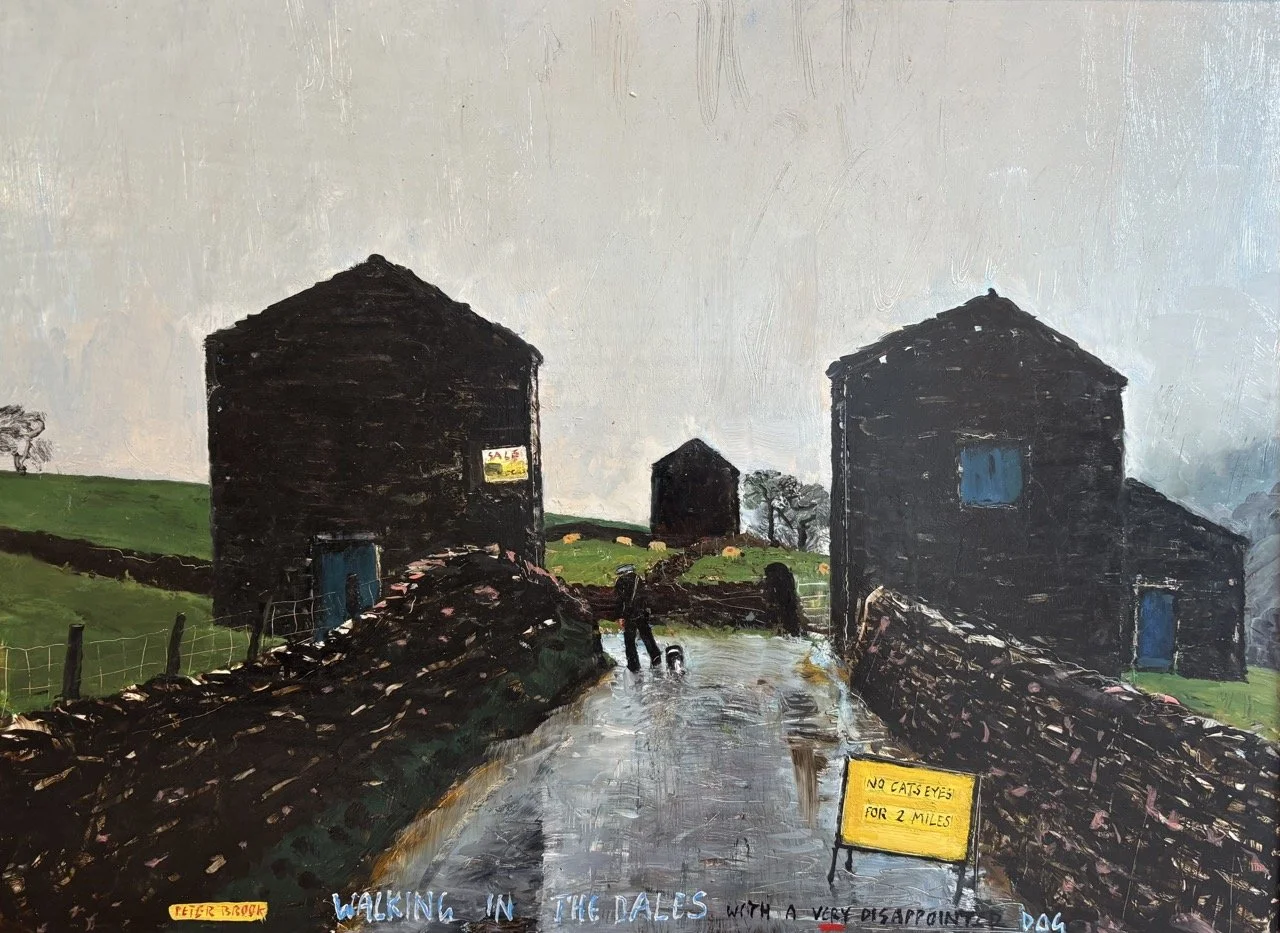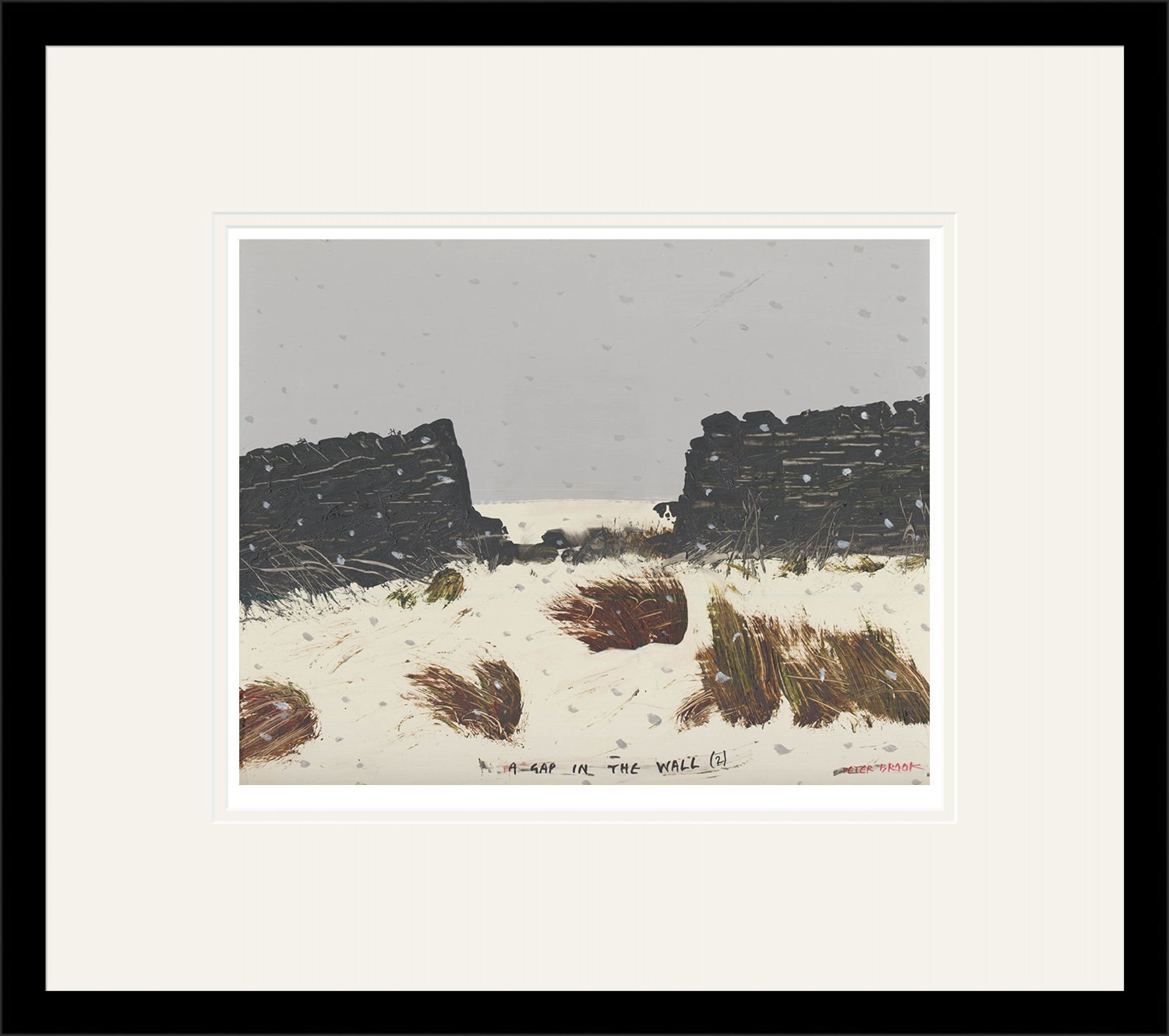Peter Brook
(1927-2009)
The Pennine Landscape Painter
AC Gallery have been the main dealers and exclusive publishers for Peter Brook since the year 1999.
Open and limited editions available.
Mounted in an off-white single/double mount (depending on the edition), Choice of mounted only or framed in ‘collectors’ black.
Open and limited editions available.
Hand finished print, embellished with an acrylic gel that dries transparent, which protects the print in the same way as glass whilst mimicking the brushstrokes from the original artwork. Gives the appearance of an original painting.
Framed without glass with a black outer frame and inner white slip frame.
We have the largest stock of signed Peter Brook prints available anywhere in the world!
Please do check availability with us before ordering, or travelling, as stock changes regularly. Thank you.
Email: enquiries@acgallery.co.uk
All are supplied framed.
Peter Brook (RBA) Originals
a-z of peter brook
Peter Brook Calendar 2026
Available to pre-order
‘Hello! The dog recognised you before I did!’ by Peter Brook
Biography
Peter Brook was born in the winter of 1927 in the Pennine village of Scholes near the 'summer wine' county of Holmfirth. His parents were farmers initially and Peter grew up among milk carts, helping with the haymaking and drinking ginger beer made by his grandmother. Both winter and the Pennines would continue to play a large part in this Yorkshire painter’s life. Peter was educated at Barnsley Grammar School before moving on to teacher training at Goldsmiths College, part of London University, where he visited exhibitions and galleries whilst also attending evening classes in life drawing. After two years in the RAF Peter returned to Yorkshire where he became a teacher in Rastrick, near Brighouse, West Yorkshire. There he married Molly. In Brighouse he found everything he needed to test his skills and start his life in art: its factories, stone built houses, colours, shapes and people. Initially he used thick paints, but this didn't give him the effect he wanted. This came when he began to mix very fine sandstone from a nearby quarry into the paint for the buildings, which gave them more substance and more power and was contrasted with his smooth sky lines which might be made using rags, rollers or his fingers.
Peter in his studio.
In 1960 Peter had his first one man exhibition at the Wakefield City Art Gallery. It was a success and was favourably reviewed in The Times. By 1962 Peter had been elected a member of the Royal Society of British Artists. Now he was teaching at Sowerby Bridge Grammar School, building up a successful art department, taking pupils out to draw the surrounding country: 'if you want a subject, look around you'. Two very successful exhibitions in the Queens Square Art Gallery, Leeds in the mid sixties were followed by another show at the University of York in 1968.
Snippet from an article in The Guardian, 1968, by Merete Bates.
Peter would say that 'All the time there have been places that caught my imagination, places that I feel very strongly about that I've had to paint'. However, like other great artists Peter wasn't about to stand still and continue to paint the same images in the same style. Having discovered a set of old victorian photographs of Yorkshire he was inspired by the possibilities these offered. He loved the print-like quality, a process that interested him. Thick paint was replaced by much thinner paint with smooth finishes but the paintings had great depth and interest.
For Peter the title is very much an important part of the painting, adding poetry and humour to the paintings whilst also making the observer think, as the title may not always be obvious when first looking at the painting.
Agnews, the London art dealers, began to represent Peter and their first two shows of his work resulted in over 100 paintings being sold. Further shows in America and Australia followed. In 1974 he was commissioned to design the Oxford University Almanac.
‘Trespassing for the sake of art’ by Peter Brook
Peter's paintings continue to show the beauty and vastness of the Yorkshire landscape and of the destruction of the Pennine life that once was.
They show Peter and his faithful dog walking over the land, through woods or towns in search of new scenes or a cup of tea and perhaps being watched by the sheep. Sometimes we see Peter standing back and looking at the picture that the viewer is also observing, so we get a chance to see what Peter sees.
Peter Brook is the Pennine landscape artist from Yorkshire who now and again will travel abroad to far off places like Cornwall, Lancashire and Scotland. Wherever he goes he captures the history, starkness, beauty and humour of the areas he paints and makes the viewer want to be there. Peters work was collected far and wide and celebrities such as Tom Courtenay, Tommy Steele, Rodney Bewes, Hannah Gordon and the late James Mason all collected his work. In 2009 the Tate Gallery included Peters work in their desk diary, and feature in the 2011 edition also, alongside many luminaries of the art world, a measure of Peters true standing. Sadly Peter passed away in November 2009, leaving a legacy that the art world will not forget.
“Whilst we miss Peter greatly we are lucky as we still get to see him every day, in his paintings, walking across his beloved moors, with Shep by his side”






















